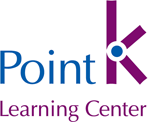LITERATURE REVIEW ON EFFECTIVENESS OF THE USE OF SOCIAL MEDIA
This report examines the broader utility of social media for the adoption of health promoting and protective behaviours.
One of the chief conclusions of this report is that there is a paucity of peer-reviewed studies testing the utility of social media interventions for esired outcomes. Instead, research has focused on documenting the range of health-related behaviours and the content of health-related discourse on these platforms. Observational studies how an abundance of both informal health conversations related to public health issues and rganized health-related activities on leading social media platforms such as YouTube, Twitter, and Facebook. The quality of health information available to users on these platforms is highly variable raising some concerns that social media users are exposed to unopposed viewpoints that counter core public health recommendations and contemporary medical science, such as those opposing immunization and promoting smoking.
Social media is currently utilized by public health organizations both as a broadcasting platform to amplify messages from traditional media sources (e.g., radio, television, print media) and as an entirely new way of collaborating and co-creating content with target audiences. In the latter approach, organizations have had to adapt their communications strategies to incorporate usergenerated content and feedback. The process of engaging users to co-create content, to rate, rank and comment on communications, more so than the resulting message, is increasingly perceived to give a heightened authenticity to messages, improving trust in, and building users’ relationships with, organizations. Social media, unlike traditional media campaigns, provides novel opportunities to embed and interject public health messaging into the daily online conversations of Canadians. In the future, it will also allow public health communicators to deliver a range of health promotion messages and self-monitoring tools through mobile applications, an innovation that will potentially increase the reach to those without computers, and will allow public health messaging to penetrate the day-to-day health conversations and activities of Canadians. The adoption of social media by leading public health organizations reflects a widespread sense that these tools are increasingly necessary to reach demographics who are abandoning traditional broadcast technologies (e.g., telephones, television) such as teens, or a significant portion of the public who are rapidly transforming the manner in which they interact with experts.
| Bibliographic Details | |
|---|---|
| Author | Rebecca Schein, Kumanan Wilson, Jennifer Keelan |
| Publisher | Peel Public Health |
| Publication Date | January 1, 2011 |
| Publication City | Brampton, ON |
| Publication Work | |
| Resource Type | |
| Resource Focus | |
| Audience | |
| Region | |
| Keywords | |
| Submitted to Point K | November 1, 2011 - 10:59am |


